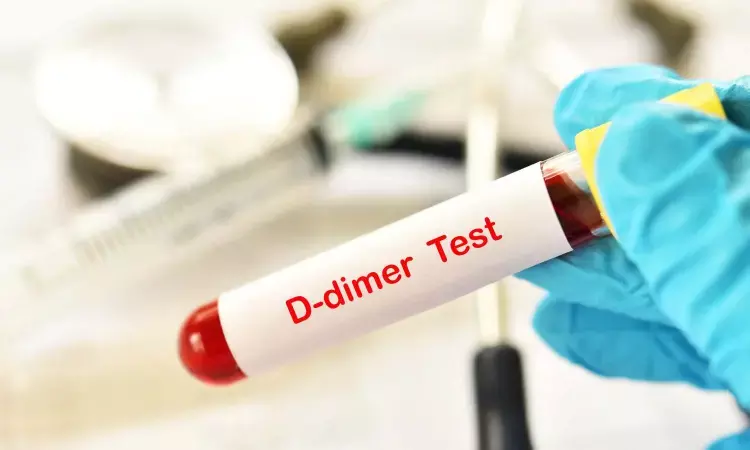- Home
- Medical news & Guidelines
- Anesthesiology
- Cardiology and CTVS
- Critical Care
- Dentistry
- Dermatology
- Diabetes and Endocrinology
- ENT
- Gastroenterology
- Medicine
- Nephrology
- Neurology
- Obstretics-Gynaecology
- Oncology
- Ophthalmology
- Orthopaedics
- Pediatrics-Neonatology
- Psychiatry
- Pulmonology
- Radiology
- Surgery
- Urology
- Laboratory Medicine
- Diet
- Nursing
- Paramedical
- Physiotherapy
- Health news
- Fact Check
- Bone Health Fact Check
- Brain Health Fact Check
- Cancer Related Fact Check
- Child Care Fact Check
- Dental and oral health fact check
- Diabetes and metabolic health fact check
- Diet and Nutrition Fact Check
- Eye and ENT Care Fact Check
- Fitness fact check
- Gut health fact check
- Heart health fact check
- Kidney health fact check
- Medical education fact check
- Men's health fact check
- Respiratory fact check
- Skin and hair care fact check
- Vaccine and Immunization fact check
- Women's health fact check
- AYUSH
- State News
- Andaman and Nicobar Islands
- Andhra Pradesh
- Arunachal Pradesh
- Assam
- Bihar
- Chandigarh
- Chattisgarh
- Dadra and Nagar Haveli
- Daman and Diu
- Delhi
- Goa
- Gujarat
- Haryana
- Himachal Pradesh
- Jammu & Kashmir
- Jharkhand
- Karnataka
- Kerala
- Ladakh
- Lakshadweep
- Madhya Pradesh
- Maharashtra
- Manipur
- Meghalaya
- Mizoram
- Nagaland
- Odisha
- Puducherry
- Punjab
- Rajasthan
- Sikkim
- Tamil Nadu
- Telangana
- Tripura
- Uttar Pradesh
- Uttrakhand
- West Bengal
- Medical Education
- Industry
D-dimer testing effective for screening acute aortic syndromes with high sensitivity and moderate specificity: Study

Researchers have demonstrated that D-dimer concentration is a very sensitive but only moderately specific marker for the diagnosis of acute aortic syndrome, a possibly life-threatening emergency condition. The accuracy of D-dimer for diagnosis was inconclusive in most of the reviews conducted earlier, usually based on small data. Newly published studies give a clearer picture of this. A systematic review and meta-analysis was performed to get a better understanding of the diagnostic performance of D-dimer. The study was published in the Annals of Emergency Medicine by Munira E. and colleagues.
A comprehensive search was conducted in MEDLINE, EMBASE, and the Cochrane Library from inception to February 2024. Other searches included lists of references of included studies and other systematic reviews. A review focusing on diagnostic cohort studies, either prospective or retrospective, assessing the use of D-dimer in diagnosing acute aortic syndrome against a reference standard test, such as computed tomographic angiography, ECG-gated CTA, echocardiography, magnetic resonance angiography, operation, or autopsy. Study selection, data extraction, and quality assessment were done by two independent reviewers. The quality of the studies was evaluated with the Quality Assessment of Diagnostic Accuracy Studies-2 tool (QUADAS-2). The analysis will be conducted through a bivariate meta-analytic model.
Results
• Out of 2017 potential citations, 25 cohort studies met the inclusion criteria, with 18 reporting the 500 ng/mL threshold included in the primary meta-analysis.
• The risk of bias was mostly unclear due to limited study reporting.
• The summary sensitivity was 96.5% (95% credible interval [CrI] 94.8% to 98%) and summary specificity was 56.2% (95% CrI 48.3% to 63.9%).
• Specificity varied markedly between studies, ranging from 33% to 86%, indicating substantial heterogeneity.
• Sensitivity analysis including seven studies with other thresholds showed a summary sensitivity of 95.7% (95% CrI 93.2% to 97.5%) and a summary specificity of 57.5% (95% CrI 50.1% to 64.6%).
A sensitivity of 96.5% denotes that D-dimer is very good as an initial test to exclude acute aortic syndrome, since it identifies almost all true cases. Meanwhile, its average specificity of 56.2% indicates that a reasonable percentage of patients without the disease will test positive, risking overinvestigation. This heterogeneity was suggested by the changing specificity across studies, which may be due to study design, population, and diagnostic criteria.
It could be that accuracy in test performance in earlier meta-analyses was overestimated since it comprised a large number of case-control studies. This systematic review, focused on cohort studies, provides a more realistic estimate of D-dimer performance in clinical practice.
Data support that the concentration of D-dimer has high sensitivity, 96.5%, with moderate specificity, 56.2%, for the diagnosis of acute aortic syndrome. Even with some uncertainty because of the risk of bias and heterogeneity among studies, findings support the role of D-dimer in the diagnostic pathway of acute aortic syndrome. D-dimer should be used by clinicians as an initial screening tool; those positive will need confirmatory testing.
Reference:
Essat, M., Goodacre, S., Pandor, A., Ren, S., Ren, S., & Clowes, M. (2024). Diagnostic accuracy of D-dimer for acute aortic syndromes: Systematic review and meta-analysis. Annals of Emergency Medicine. https://doi.org/10.1016/j.annemergmed.2024.05.001
Dr Riya Dave has completed dentistry from Gujarat University in 2022. She is a dentist and accomplished medical and scientific writer known for her commitment to bridging the gap between clinical expertise and accessible healthcare information. She has been actively involved in writing blogs related to health and wellness.
Dr Kamal Kant Kohli-MBBS, DTCD- a chest specialist with more than 30 years of practice and a flair for writing clinical articles, Dr Kamal Kant Kohli joined Medical Dialogues as a Chief Editor of Medical News. Besides writing articles, as an editor, he proofreads and verifies all the medical content published on Medical Dialogues including those coming from journals, studies,medical conferences,guidelines etc. Email: drkohli@medicaldialogues.in. Contact no. 011-43720751


